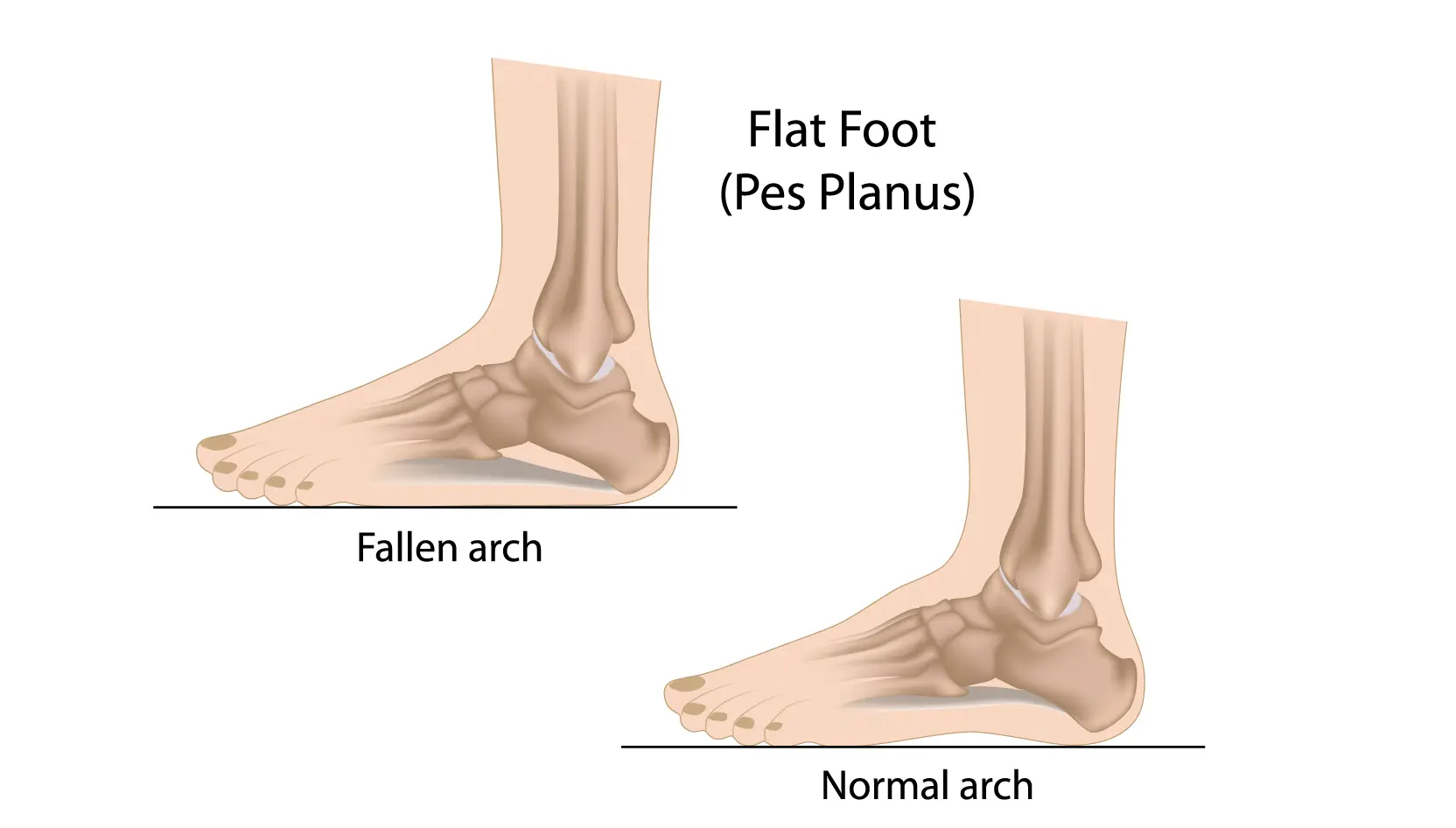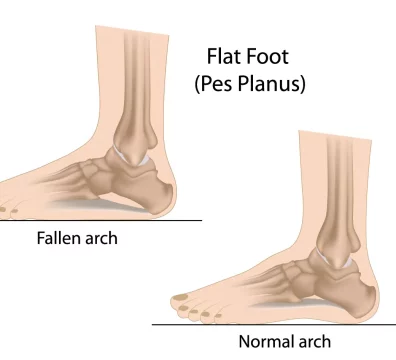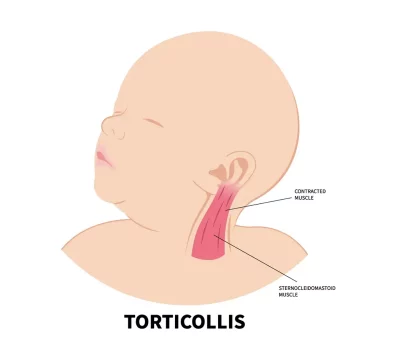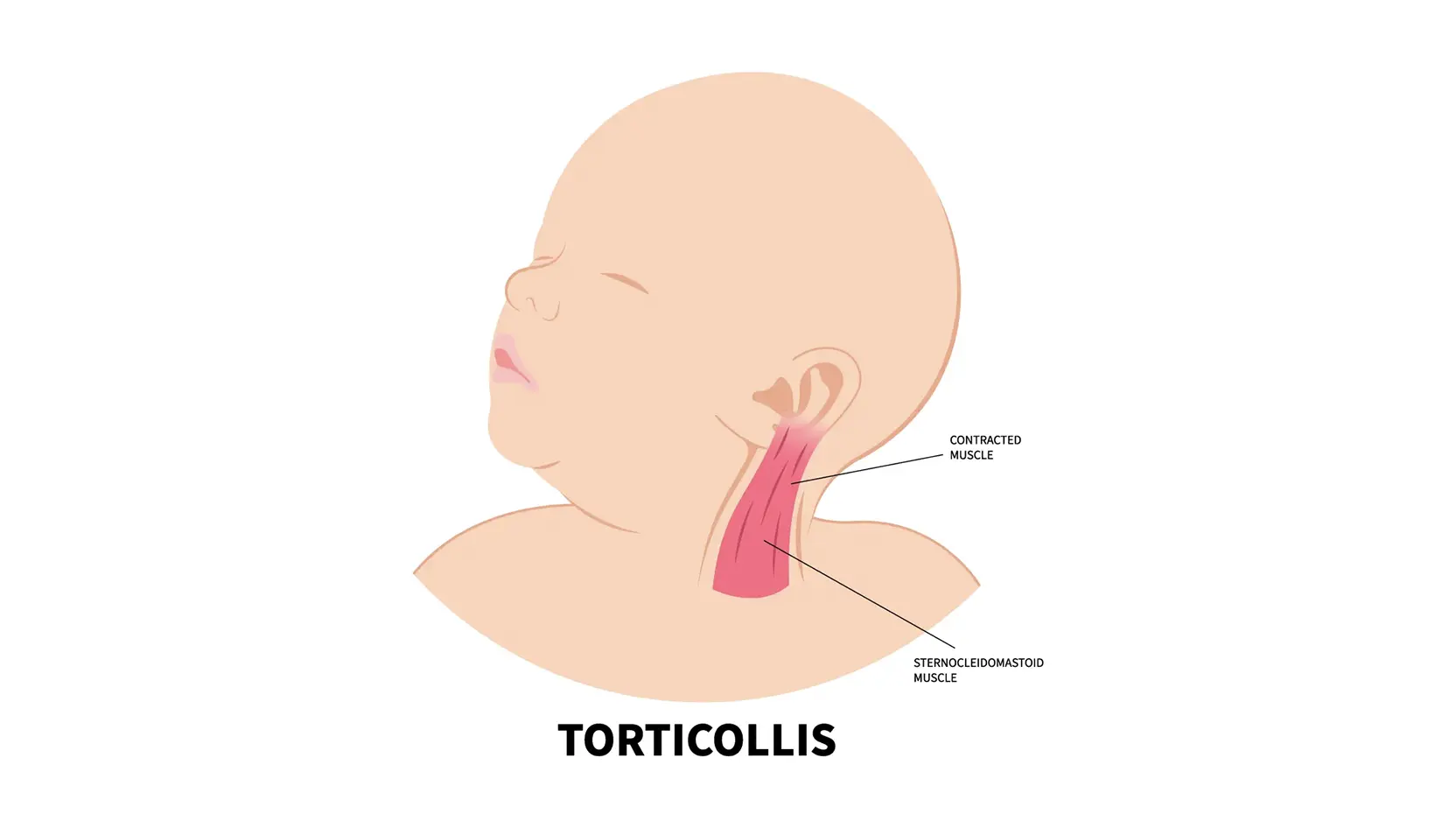What are flat feet and what causes it?
Typically, infants have flattened arches as their bones and joints are very flexible and spread out as they stand up. Also, they have an additional fat pad on the inner edge of each foot, covering the arches.
As the child grows older, the joints are less flexible, and arches develop. Usually by age 10, most children would have developed a normal medial arch. However, a small percentage of children may not develop an arch and continue to have flat feet in adulthood.
Flat feet may be linked to hyper-laxity, obesity, injury, unusual or prolonged stress to the foot, faulty biomechanics, or bony abnormalities.
What are the different types of flat feet?
There are two types of flat feet:
- Flexible flat feet
Most common. Occurs when the foot is mobile, and a medial arch is visible in a non-weight bearing position, which collapses upon standing up
- Rigid flat feet
Associated with an abnormality in the bones of the feet in which the arch is lowered in both sitting and standing
How can I prevent flat feet?
Do flat feet require treatment?
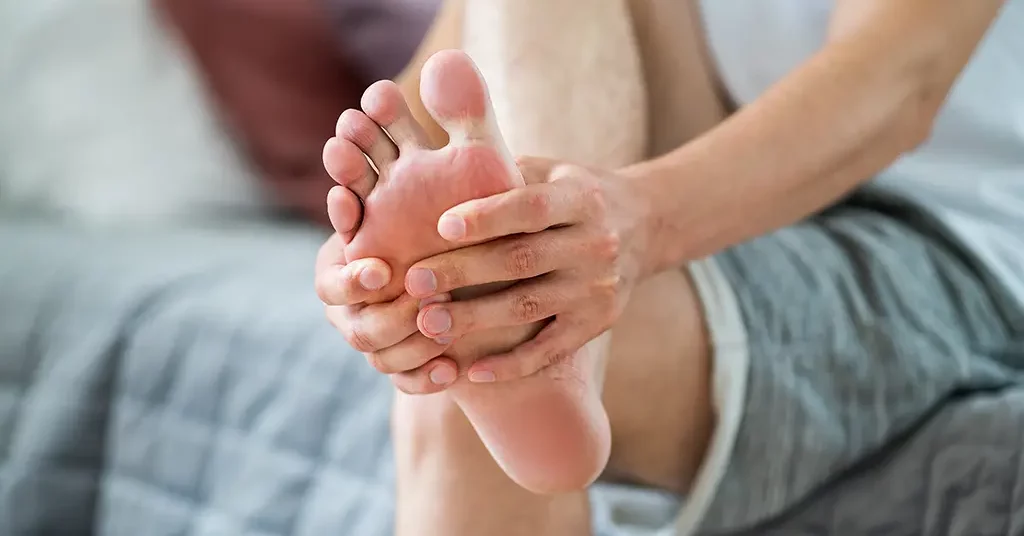
Treatment is not necessary in most cases of flexible flat feet if there is no associated pain or walking difficulties. However, in some cases, the child may have weak foot muscles and tight Achilles tendon due to poor foot biomechanics caused by the flatten arch. It will be encouraged to stretch the Achilles Tendon and calf muscle, which can affect the development of the arch.
It is advisable to seek professional advice if your child:
- Feet are stiff, weak or painful
- Has problems with walking or balance
- Often gets feet or ankle injuries
- Only one foot is affected
How are flat feet managed?
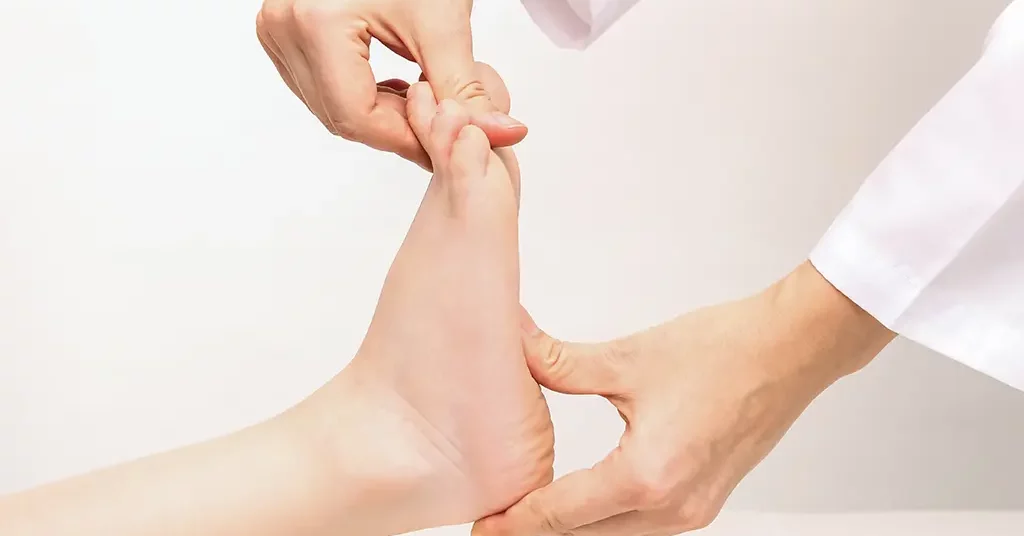
A specialist doctor will diagnose the condition and recommend treatment, which may involve a referral to a physiotherapist/podiatrist/orthotist. Most patients with painful flat feet can be managed through physiotherapy.
Physiotherapy session may consist of the following:
- Assessment of the lower limb strength and bony alignment
- Movement / Foot posture analysis
- Prescription of insoles with medial arch support. The insoles can either be prefabricated or customised depending on the severity of the condition
- Foot wear advices
- An Achilles tendon stretching programme may be recommended if the tendon is tight
- Your child may be referred to undergo a strengthening programme based on assessment findings
Indication for surgery
What to do on a physiotherapy appointment day
- Please arrive 10 minutes before the scheduled time for registration
- Each therapy session lasts for 30 to 60 minutes
- Please bring your child’s school shoes and/or sports shoes for the assessment

